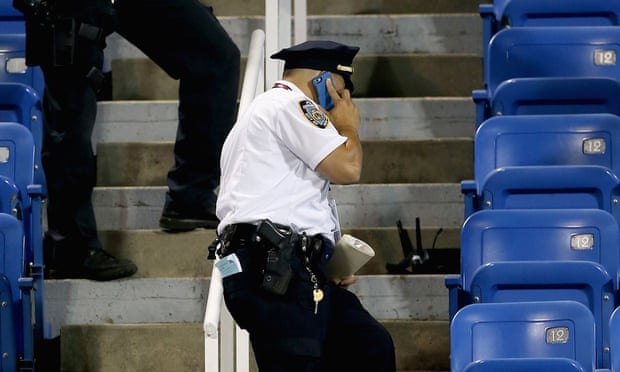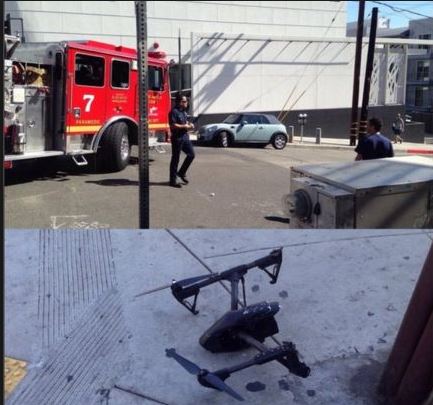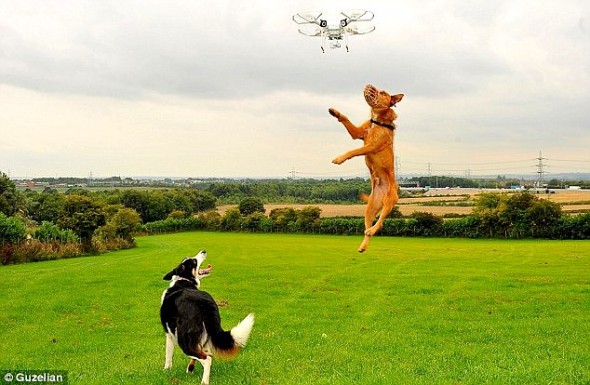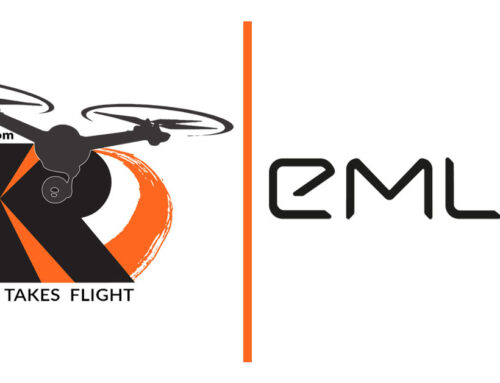Everything in life has rules and most everyone complains about them from time to time. “Traffic is bad today, why can’t I just drive on the sidewalk?” “I just need a quick snack, no one will notice that I swiped a bag of peanuts from the store...”
Drones are no different. Each morning I get up to read my news streams and sure enough, there’s some guy who broke the rules and/or some person complaining about the recommendations or rules for UAV/drones. One can’t blame some of the complainers; the people that are breaking the rules make it more difficult for those of us that try to follow them. And to be fair, some of the UAV/drone rules and laws are not only unreasonable but downright ineffective. Some of them are a knee-jerk reaction from local politicians who are for the most part, ignorant of the FAA and existing laws.
But, why do we need to have these rules in the first place? Why can’t common sense prevail?
Let’s tackle the last one first.
“Common Sense” isn’t common at all.
The Dunning Kruger effect plays a significant role in the UAV/drone community, and if you don’t know what it is, follow the link. You will likely appreciate the reference. We’ve all been “that person” at least once in our lifetimes.

The fool doth think he is wise, but the wise man knows himself to be a fool.
Many drone owners purchase drones, drive to the park, drop in the battery, and fly. Some may visit webpages, join communities, and at the least gain a basic knowledge of survival skills with their drone. A fraction seek training, read books, or take a course at a local drone instructional. As a result, a small percentage of drone operators fly their vehicles into Ferris wheels, joggers, infants, windows, over ski race courses, etc.
WHY A MAXIMUM OF 400′ AGL?
With limited exception, general aviation is not permitted to fly below 500′ AGL (above Ground Level) in uncongested areas (FAR 91.119). Helicopters have some specific exclusions. This minimum altitude coupled with the UAV maximum of 400′ provides for a 100′ buffer between general aviation and UAV operations. In theory this should work well towards keeping UAV out of the flight path of any general aviation aircraft.
WHY MORE THAN 5 MILES FROM AN AIRPORT/AERODROME?
When aircraft are landing, they fly a “cone” that may have them at various altitudes. This airspace is understandably, highly controlled. The rule does not mean you absolutely cannot fly within these areas; it means operators must contact the control tower before flight. My experience has been that they’re very willing, polite, and appreciative of the contact. Be prepared to tell them exactly where you’ll be flying (Lat/Long are nice, but I’ve never been asked for those), altitude you’ll be flying (I’ve never asked for more than 400′, but one certainly can ask), time of day you wish to fly, and for how long you’ll be flying. They’ll likely ask for a phone number, and on two occasions, I’ve received a call-back from the tower verifying that my mission is complete.
WHY ARE DRONES VLOS?
This should be fairly self-evident. Visual Line Of Sight means the operator or a spotter can always see the UAV/drone. Currently, FPV without a spotter is not permitted in North America. Using an FPV device does not align with “VLOS.” However, using a spotter is permissible. Someone with control must always have a visual fix on the UAV. This is one of the reasons that UAV flight beyond one mile is generally not a good plan.
NO FLIGHT NEAR PEOPLE OR STADIUMS
Persons not involved/aware of your flight have a right to a reasonable expectation of safety. This includes not being concerned about what might fall on their heads while enjoying a football game. There have already been several instances of UAV/drones falling into stadiums and in at least one case, injuring a spectator. In most cases of stadium flight, the operator was also violating VLOS rules.

WHY IS “MORE THAN 25′ AWAY FROM PERSONS” REQUIRED?
Similar to the above explanation, UAS can harm people. There have been multiple instances of bystanders being injured, including two infants, during the landing operation of UAV/drones. Aside from it being a rule, it’s simply sensible to take off and land far away from people in the event of an unruly drone. Remember, blades can be very sharp.

HERE’S A LONG RULE:
Do not fly near or over sensitive infrastructure or property such as power stations, water treatment facilities, correctional facilities, heavily traveled roadways, government facilities, etc.
Why? It should be fairly self-explanatory. In one recent drone incident, the pilot flew his DJI Inspire into a power line. The utility company is currently suing him for the $40,000.00 in damages incurred from the UAV cutting lines, manpower to repair/restore electricity, etc. Not flying over prisons seems self explanatory, no? Avoiding government facilities, such as the recent flyover a nuclear submarine base is likely a good idea, given that if one is caught, jail time and heavy fines are to be expected.

RESPECT THE PRIVACY OF OTHERS
If you fly a typical UAV, you already know that the cameras on these devices is fairly wide-angled, and incapable of taking detailed pictures of the general public without the UAV being very, very close to the subject. The general public doesn’t know this, and one shouldn’t expect them to. They don’t know what you know. All they know is that a drone with a camera is pointed their way and like most rational people, they’ll be upset. If you’re going to be shooting photos or video of a landmark or people, be courteous and let them know. Talk to the people around, put up signs, notify authorities; take responsible action to prevent problems for yourself or others that might want to fly in that area in the future.
BE RESPECTFUL OF ANIMALS AND WILDLIFE
This isn’t in the FAA or Transport Canada guidelines; it’s one of my own. Dogs love to chase drones. Dog’s noses are very tender and soft and when a flying Cuisinart blade hits the dog’s nose, blood is likely to ensue. The same goes for filming wildlife. There are many videos of irresponsible (albeit understandable) drone operators wanting to fly near wildlife who have found their drone being attacked by cheetahs, mountain goats, antelope, monkeys, and other wild animals. While it’s understandable to want to get close to them in their habitat, be sure to keep a distance where the animal isn’t going to be able to reach the UAV and possibly be harmed by it. Taking a dog to a vet to get a nose stitched up is one thing; capturing and taking an antelope in to get an eye treated is entirely another thing.
All in all, the “rules” are quite simple, if one applies logic and some minimal form of self-evaluation regarding skill. One does not buy a drone and within 10-12 flights become “proficient.” It takes at least 40 hours of flight time to become reasonably proficient. This equals approximately 120 flights of an average battery time of 20 minutes per flight. Sound familiar? It requires 40 hours of flight to earn a beginner’s private pilot license, too.
Applied knowledge goes a long way to better practices and as the old saying goes, “Perfect Practice makes perfect.“


